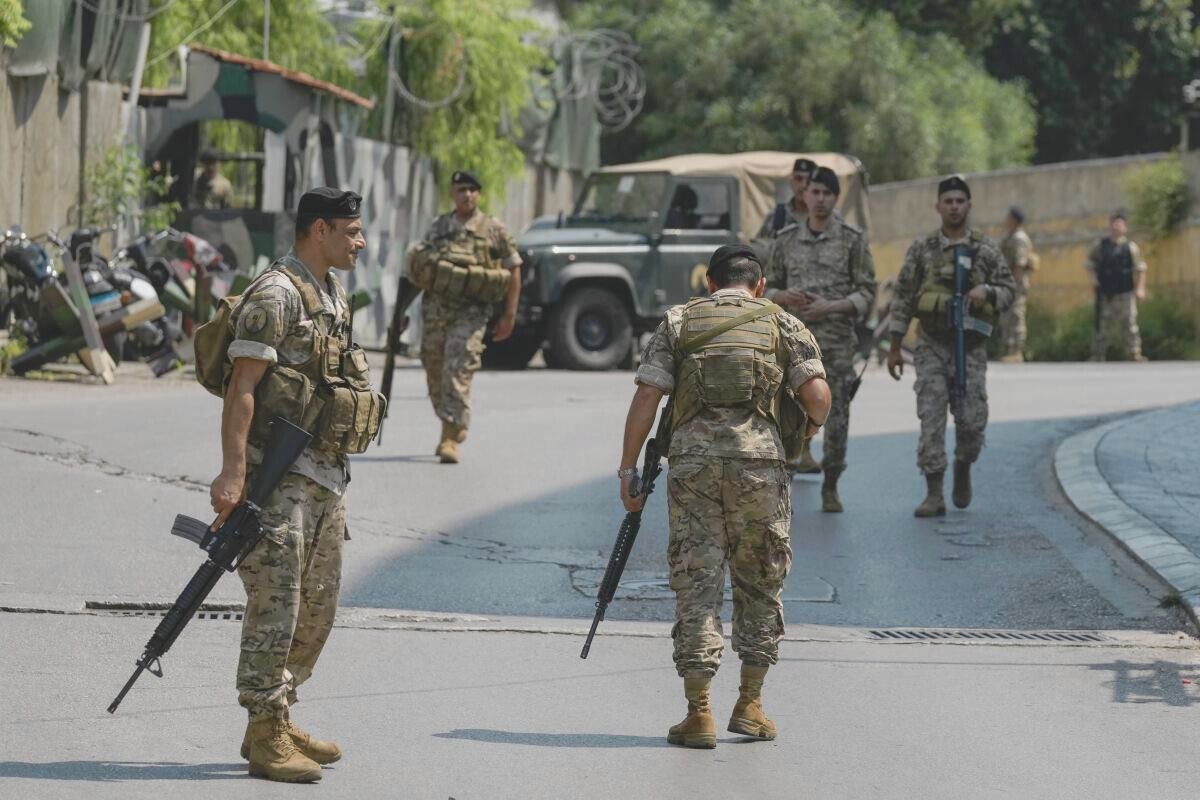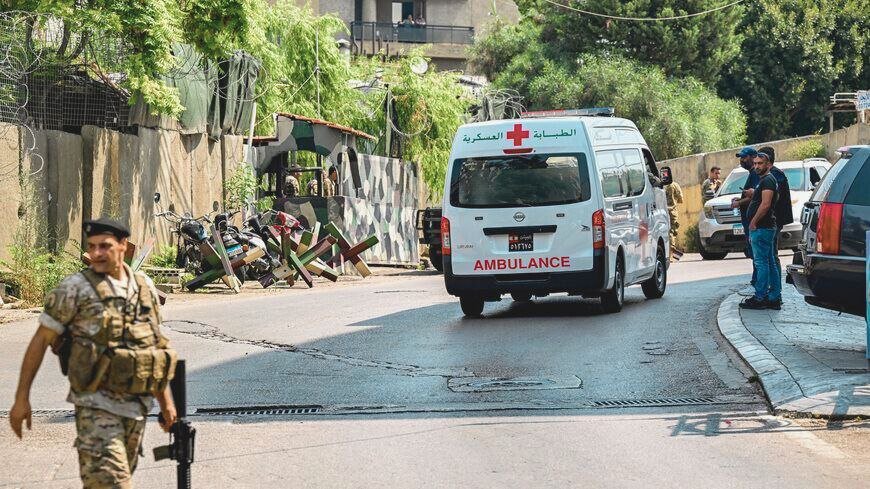Contents
Initial Attack on the US Embassy
The recent attack on the US Embassy in Lebanon commenced abruptly, sending shockwaves throughout the region. The initial assault began in the early hours of the morning when gunfire erupted near the embassy’s main entrance. Witnesses reported hearing a series of explosive sounds, followed by a chaotic exchange of gunfire. The sounds of aggression were unmistakable, as several rounds were fired at the embassy compound, shattering windows and causing immediate panic among staff and civilians in the vicinity.
Eyewitnesses recounted scenes of disarray and fear. One local resident, who lives near the embassy, described the atmosphere as “utterly terrifying,” adding that “the sounds of gunshots and explosions were relentless.” Another witness, who was passing by, noted the swift response of the embassy’s security personnel. “They reacted immediately, securing the gates and directing people to safety,” he said. The rapid deployment of security measures undoubtedly played a crucial role in safeguarding lives within the compound.
Local law enforcement agencies were quick to respond to the attack. Within minutes of the initial gunfire, police and military units arrived at the scene, cordoning off the area and setting up checkpoints to control the situation. Their presence was instrumental in containing the threat and preventing further escalation. The swift action by both embassy security personnel and local law enforcement highlights the coordinated efforts to protect the embassy and its occupants.
Despite the immediate response, the situation remained tense as the attackers continued their assault. The embassy staff, following established emergency protocols, took cover in designated safe zones within the compound. Their training and preparedness were evident as they communicated with security forces and awaited further instructions. The initial moments of the attack were characterized by a mix of fear, confusion, and decisive action, laying the groundwork for the subsequent apprehension of the shooter.
Role of the Lebanese Army in Neutralizing the Threat
The Lebanese Army played a pivotal role in responding to the attack on the US Embassy in Lebanon, demonstrating a high level of preparedness and coordination. Upon receiving the alert, the army swiftly deployed specialized military units to the scene. Their primary objective was to contain the situation, ensuring the safety of embassy personnel while neutralizing the threat posed by the shooter. The army’s strategic approach involved establishing a secure perimeter around the embassy, effectively isolating the threat and preventing any potential escalation.
The tactical response included the use of armored vehicles and rapid deployment forces, which allowed for a swift and decisive action. The Lebanese Army’s strategic positioning of snipers and tactical units provided them with a vantage point, ensuring they could neutralize the shooter without causing collateral damage. This meticulous approach was crucial in avoiding any harm to civilians or embassy staff.

Coordination with other security agencies, including the embassy’s own security forces, was seamless. The Lebanese Army worked in tandem with these entities, sharing intelligence and operational strategies to ensure a unified response. This collaboration was instrumental in the efficient apprehension of the Syrian shooter, who was detained without further incident.
Statements from military officials underscored the importance of rapid response and strategic coordination. General Joseph Aoun, the head of the Lebanese Army, emphasized that the successful neutralization of the threat was a result of rigorous training and inter-agency cooperation. He stated, “Our forces acted with precision and professionalism, ensuring the safety of all involved. This incident highlights the critical role of preparedness and coordination among security agencies.”
Government representatives also praised the army’s actions, with the Minister of Defense noting that the swift and effective response was a testament to the army’s capability to handle such threats. The collaborative efforts between the Lebanese Army and other security agencies not only ensured the immediate safety of the embassy but also reinforced Lebanon’s commitment to maintaining security and order.
Identity and Motives of the Syrian Shooter
The identity of the Syrian shooter apprehended by the Lebanese Army following the attack on the US Embassy in Lebanon has sparked significant concern. Preliminary investigations have revealed that the individual is a Syrian national with known affiliations to extremist organizations. A notable piece of evidence—a vest inscribed with ‘Islamic State’—was found on the attacker, suggesting a possible connection to the notorious terrorist group. This discovery has intensified the scrutiny around the shooter’s background and potential motives.
Authorities are currently investigating the shooter’s history, including any previous engagements with militant groups. The presence of the ‘Islamic State’-branded vest indicates a likelihood that the shooter may have been influenced or directed by the terrorist organization. This raises critical questions about the extent of the Islamic State’s operational reach and its ability to inspire or directly orchestrate attacks beyond its traditional strongholds.
In understanding the motives behind this attack, it is essential to consider the broader geopolitical context. The ongoing conflict in Syria has created a complex environment where multiple factions vie for power, often resorting to extremist ideologies. The shooter’s allegiance to the Islamic State could be indicative of a broader strategy aimed at destabilizing regional security and targeting western interests. The motive could be rooted in ideological fervor, retaliation, or a strategic move by terrorist networks to gain attention and assert influence.
Furthermore, the incident raises questions about prior intelligence and the possibility of missed warnings. The effectiveness of regional and international intelligence-sharing mechanisms is under scrutiny, as early detection of such threats is crucial in preventing attacks. The shooter’s affiliations underscore the need for enhanced vigilance and cooperation among security agencies to identify and neutralize potential threats.
Overall, the apprehension of the Syrian shooter and the implications of their connections to the Islamic State have significant ramifications for regional and international security. It highlights the persistent threat posed by terrorist networks and the necessity for a coordinated approach to counterterrorism efforts.
Implications and Reactions from the International Community
The recent attack on the US Embassy in Lebanon has elicited a wide range of reactions from the international community, underscoring the gravity of the incident. Statements from both US and Lebanese government officials have emphasized the severity of the situation. US Secretary of State Antony Blinken condemned the attack, reaffirming the commitment of the United States to work closely with Lebanese authorities to ensure the safety of diplomatic missions. Lebanese President Michel Aoun also expressed his dismay, highlighting the importance of maintaining diplomatic relations and security in the region.
Other nations and international bodies have also voiced their concerns. The European Union issued a statement condemning the attack and calling for heightened vigilance and cooperation in counter-terrorism efforts. Similarly, the United Nations reiterated the necessity of protecting diplomatic missions and urged all parties to uphold international law.
The attack has significant implications for US-Lebanon relations. Historically, the two nations have maintained a complex relationship marked by periods of cooperation and tension. This incident could potentially strain diplomatic ties, especially if it is found to be part of a larger pattern of regional instability. Experts suggest that increased security measures and intelligence-sharing between the two countries may become necessary to prevent future incidents.
From a broader perspective, this attack highlights ongoing regional challenges. The Middle East has long been a hotspot for geopolitical tensions, and this incident underscores the persistent threats to regional stability. It may prompt the international community to reassess their strategies in combating terrorism and ensuring the safety of diplomatic missions worldwide.
Expert opinions suggest that a multi-faceted approach, including diplomatic, military, and intelligence efforts, will be crucial in addressing the underlying issues that contribute to such attacks. Historical context reveals that incidents targeting embassies are not isolated events but often part of larger geopolitical dynamics. Future security measures may include enhanced protective protocols for embassies, increased international cooperation, and more robust counter-terrorism strategies.
OUR SITE: toinewsalert.com

